 Raven
Raven
| Length Overall | Barrel Length | Weight | Caliber | Action Type | Magazine capacity |
| 4 3/4" | 2 1/2 inches | 15 oz. | .25 A.C.P. | Recoil Semi | 6 |
Don't misinterpret what I am saying here. I do not consider this to be a fine gun or a great social tool, and I certainly do not consider the men who design,
Well enough of the soap box; after going on about what a symbol of freedom these cheap little chunks of metal are, I must admit that I do not care for this whole class of firearms. The raven is a blocky, clunky little gun with no sophistication, little accuracy, and little power. It is made of a zinc alloy, and will not rust. It is also, as much as I hate to admit it, very reliable. I have yet to see this gun misfire a single time. Much of this is due to the choice of caliber, the .25 auto, and the loose manufacturing tolerances. I do not care for this caliber because of it's low power and relatively high cost. Most of the cheap little autos out there, which are collectively known as Saturday Night Specials, use this round rather than the better .22 rimfire, because the .25, with it's extraction groove, and central primer, is much more forgiving of design and manufacturing problems than is the .22. A cheaply made gun in .22 would be much more likely to jam, or misfire than the same weapon chambered in the .25. Other factors which add to the dependability of this gun are the simple design, and loose tolerances used. It is striker fired and has the recoil spring wrapped around the barrel in the manner of the Walther. Take down, and cleaning are very simple. The gun is not tight and is not very accurate, though with the small sights and short sighting radius, it is not likely that accurate shooting would be possible even if the gun was tightened up.
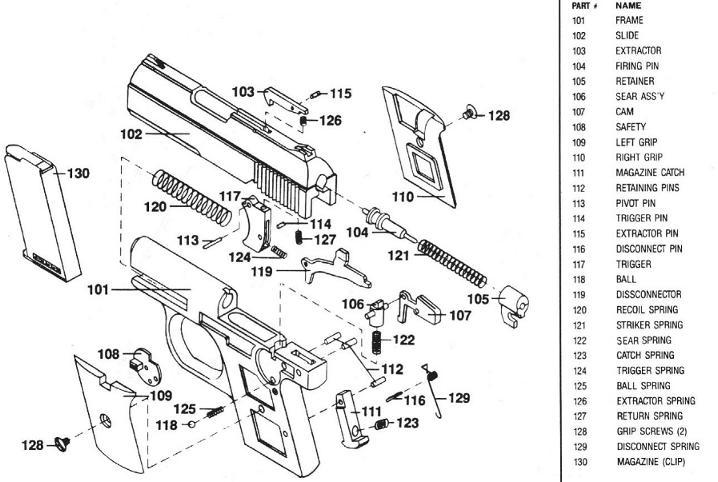 If these guns are so dependable, then why do they have
such a horrible reputation for jamming? I believe that part of this stems
from a prejudiced, even elitist view by some gun enthusiasts. These are people
(much like myself) who spend hundreds, even thousands of dollars on individual
guns, and then lavish enough care on them to make wives and girlfriends jealous.
These same individuals are not likely to go into a shop and pick up a Raven
for $75, because they "know" that the gun is unsafe and unreliable. Having
no personal experience with the piece, this "knowledge" is never challenged,
and is spread to other gun enthusiasts. The other side to this is that the
average purchaser of one of these guns, not being a gun person, will not
maintain it properly. My Raven, even though I am not crazy about it, receives
the same care and maintenance as my Gold Cup, or any of my other guns. It
is regularly cleaned and lubricated, and properly stored. I have heard stories
from police, and other dealers, about people who load up their little guns,
and then stick them in a holster, or a drawer, or find some hiding place,
and then never touch it again for weeks, months, even years. The guns get
dirty, the lubricant gets hard, the ammo turns green and sticky, and then
one day, the worst happens and the householder is called upon to defend himself
against intruders. He digs the gun out from wherever he put it all that time
ago, points it at the intruder, and pulls the trigger. CLICK, CLICK!
If he survives the encounter, he will no doubt vilify the "cheap
little piece of junk" to his friends, the police, and anyone else who will
listen.
If these guns are so dependable, then why do they have
such a horrible reputation for jamming? I believe that part of this stems
from a prejudiced, even elitist view by some gun enthusiasts. These are people
(much like myself) who spend hundreds, even thousands of dollars on individual
guns, and then lavish enough care on them to make wives and girlfriends jealous.
These same individuals are not likely to go into a shop and pick up a Raven
for $75, because they "know" that the gun is unsafe and unreliable. Having
no personal experience with the piece, this "knowledge" is never challenged,
and is spread to other gun enthusiasts. The other side to this is that the
average purchaser of one of these guns, not being a gun person, will not
maintain it properly. My Raven, even though I am not crazy about it, receives
the same care and maintenance as my Gold Cup, or any of my other guns. It
is regularly cleaned and lubricated, and properly stored. I have heard stories
from police, and other dealers, about people who load up their little guns,
and then stick them in a holster, or a drawer, or find some hiding place,
and then never touch it again for weeks, months, even years. The guns get
dirty, the lubricant gets hard, the ammo turns green and sticky, and then
one day, the worst happens and the householder is called upon to defend himself
against intruders. He digs the gun out from wherever he put it all that time
ago, points it at the intruder, and pulls the trigger. CLICK, CLICK!
If he survives the encounter, he will no doubt vilify the "cheap
little piece of junk" to his friends, the police, and anyone else who will
listen.As a small aside, on my own personal gun, the retainer (part 105), broke, during disassembly and cleaning. This was not a catastrophic failure, did not occur during firing, and did not put my life in danger; but it was quite irritating. A new retainer costs about $10. A look at the broken retainer revealed no surprises. It broke due to crystallization, and brittleness of the cheap alloy from which the gun is constructed. In speaking to other gun owners, and in research on the web, I discovered that failure of the retainer is a VERY common occurrence on these guns. It is too bad, really. The basic design of the gun is not bad, - simple, inexpensive, and potentially accurate and dependable. Unfortunately, the execution is terrible. Were Cobra, or whatever these people are calling themselves these days, willing to put just a bit more care into the production of these pieces, they could have themselves a very nice little gun, with little cost increase over what they are producing now. Oh well. As of this writing, I can not really recommend purchase of a Raven, except for curio or collector purposes (the guns do have a significant, though not necessarily honorable, place in gun history). Getting a good Raven is possible, but is a matter of pure luck. What happened to mine was a failure of quality control. There are other other Ravens out there with retainers which, by sheer good luck, will last forever.
| Disassembly | |
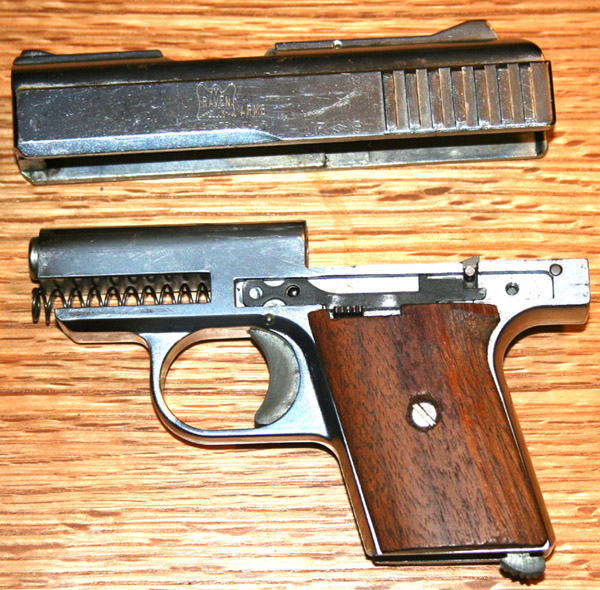 |
Use a blunt object to push in the retainer. Our fingers will be too large, but a pencil eraser should fit perfectly. Do not push hard, use just enough pressure to move the retainer a quarter inch or so. These retainers are made of pot metal, and are very brittle. Also be aware that the retainer is spring loaded, and may come of the frame, once released. |
 |
With the retainer pushed in, pull the slide up, and lift it off of the frame. Please be aware that the recoil spring is just under the barrel, is unsecured, and may come off during cleaning. |
 |
The Raven, field stripped. The gun is not designed to be taken down any further, and many of the parts are not very durable. Any further disassembly will probably break something, and render the gun useless. |
| During reassembly, the slide is replaced on the top of the frame, pulled back and then allowed to slowly slide forward. Be sure to have the retainer pushed in while the slide is being allowed forward. Failure to do this, will permit the locking tab of the slide to hit its latch on the frame, with the possibility of breakage of the brittle retainer. This is how I broke mine. | |
The Ring of Fire
The story of these little guns, and of their continuing legacy, is far more interesting than the guns themselves. It is part family history, part cautionary tale to
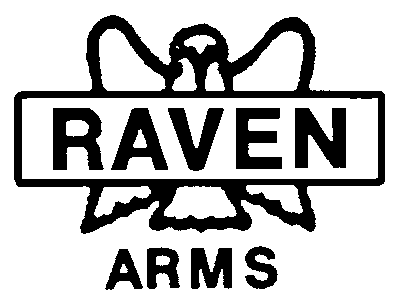 lawmakers, and part soap opera, though few soap opera writers would
have the gall to write such an unlikely, interconnected and convoluted story. It all
started with the passage of the 1968 Gun Control Act. This was the
first large scale set of federal guns laws, since the passage of the
equally poorly thought out (and let's not forget unconstitutional)
NFA of 1934. Among its other provisions, the GCA of 1968 outlawed
importation of a certain class of small, usually inexpensive guns,
which have come to be known as Saturday Night Specials.
lawmakers, and part soap opera, though few soap opera writers would
have the gall to write such an unlikely, interconnected and convoluted story. It all
started with the passage of the 1968 Gun Control Act. This was the
first large scale set of federal guns laws, since the passage of the
equally poorly thought out (and let's not forget unconstitutional)
NFA of 1934. Among its other provisions, the GCA of 1968 outlawed
importation of a certain class of small, usually inexpensive guns,
which have come to be known as Saturday Night Specials. So what is a Saturday Night Special? The term is said to have originated in Detroit, at least in its modern usage; but is of uncertain ultimate origin. In addition, the term never did have a particularly exact meaning. This ambiguity did not (and does not) prevent certain lawmakers from attempting to ban them. Still, though this is an arbitrary, and very subjective term, there are certain qualities associated with it. As a general rule, they tend to be small, cheap, of small caliber, and of uncertain quality, though the inexactness of the term makes this all subject to change and interpretation. By whatever means you use to judge, the Raven, as well as the other products of the so called Ring of Fire, are Saturday Night Specials. So what is The Ring of Fire?
The Ring of Fire is a series of sometimes competing, but related gun manufacturers, originally encircling the city of Los Angeles. These consist, or consisted, of Raven, Phoenix, Jennings, Davis, Lorcin, Bryco, Jiminez, Sundance, Cobra, and probably some others. When these are described as related manufacturers, the phrase carries more than one meaning. All of these companies are owned by members of the Jennings family, in-laws, or friends. All were started in the eastern suburban industrial parks, of the greater Los Angeles area, and all make cheap, cast guns of low quality and similar (if not identical) design. Gun enthusiasts turn up their noses at these little beasts, and the anti gun crowd likes to blame them for the inner city violence caused by their own failed social policies. So these would seem to be guns, and companies, with no friends. Yet, they are wildly successful, and millions of these little guns are sold every year. So who buys them?
According to company owners and managers, these guns are bought by non-enthusiasts, who simply want something with which to protect themselves, and do not have the means or the desire to spend any more than they have to. According to the anti gun crowd, these guns are bought (or stolen) by criminals, who they claim are the targeted, or at least the most enthusiastic, purchasers of these products. To back these claims, they cite FBI reports, and police department statistics. According to these statistics, the claims that these are the favored guns of the criminal element are completely justified. Most years, Ring of Fire guns generally take six or more of the top ten spots for guns used in crimes, or confiscated from criminals.
While the previous would pretty much seem to justify the call for banning these guns, such a mindset is a bit too simplistic, and is representative of the way that those who would ban guns think. A simplistic mindset produces one dimensional thinking, only being able to consider one factor at a time, and unable (or, more likely, unwilling) to consider root causes or interactions with other factors. Such thinking sees everything as a series of unrelated single events happening in a vacuum. Because of this, the NFA of 1934 was passed. When this did not work, instead of admitting failure, the left claimed that what was needed was a new, and more comprehensive set of gun laws, embodied in the GCA of 1968. When these new laws failed, this was once again said in 1994, and is being said today, after the failure of the magazine ban of 1994. This tends to be the way of the left, and of the nanny state which they have put into place. So in 1968, the GCA of 68 was passed, with no thought of possible consequences, or of the real reasons for the violent crime that these laws were claimed (like to earlier failed NFA of 34), to stop. All of the companies, which are collectively known as The Ring of Fire, owe their existence to the GCA of 1968. At that time, a number of cheap little handguns were being imported, and were often showing up in street crimes. After WWII, when civilian firearms production was resumed, most American manufacturers did not want to deal with such guns, for a couple of reasons, so most of the little guns were imported, generally from Italy or Spain.
Very small guns, in 25 caliber, had been made since the turn of the century. Known as "vest pocket" guns, they harkened back to a more elegant time, when gentlemen would stroll at night, sometimes with their ladies. Such men would have a walking stick, and perhaps a trusty little pistol tucked into the pocket of the vest, as they took their nightly constitutionals, so that hoodlums, and the criminal elements might be subdued by a respectful fear of possible consequences, into a more honest and hardworking frame of mind. At least, that was the theory. These guns were not Saturday Night Specials. They were quite well made, quite well finished, and were sold to gentlemen (sometimes to be given as gifts to their ladies). They were as expensive as any full sized service pistols, and just as well made. Often, they were better made than a regular service pistol, and had fine engraving, used exotic materials for stocks, and were plated in gold, chrome, or were very finely blued. They were, like the vest watch, as much a personal item and piece of jewelry, as a practical tool.
After WWI, and especially after WWII, there was a lot less elegance in the country, and many of the cultural norms were challenged or forgotten. Pistols were banned in Certain places, and the carrying of pistols was banned throughout most of the country. This pretty much killed the traditional gentleman market for little vest pistols. Certain other arms had also been banned by the NFA of 1934. Predictably, in spite of (or perhaps because of) these bans, street crime rose, and a rather violent youth culture began to take shape, the so called "juvenile delinquents" of the forties and fifties. We had also, particularly because of the influence of the Great Depression, become a nation of cheapskates. So no one was going to pay top dollar for a little vest pocket gun, which could no longer be carried most places, when for little or no extra money, a full powered service pistol could be had. Indeed, a war surplus pistol, in a full powered service caliber, could be had for even less than the cost of a little vest pocket model. So eventually, the major gun manufacturers removed the little guns from their lines. The void was filled by foreign imports.
Europe, after the war, was starved for cash, and looking to rebuild and retain its ravaged economy and industrial base. This was helped somewhat, by the strength of the American dollar, which made European products relatively cheap. The gun industry, in particular, needed a foreign outlet. War orders had ceased, and there was no civilian gun market. The lack of a civilian gun market was due to the laws passed all throughout Europe, during the Nazi occupation, by puppet governments, or by the Nazis themselves. These restrictions had been put in place to keep subject populations helpless and unarmed. This included the population of Germany, also unarmed, which did not universally support the Nazi regime. Disarmament made them all equally helpless to resist. When the war ended, the newly restored, and newly formed governments saw no reason to rescind laws which were such a useful check on the supposedly newly freed subject populations. For similar reasons, many of the wartime taxes, rationing, and restrictions on movement were also retained. Politicians do covet, and thrive on power and control, after all, no matter what they say when campaigning.
Meantime, in America, though the market for fine old vest pocket pistols had dried up, there was a considerable market for firearms in general, largely fueled by returning servicemen who had become familiar with firearms, and had seen first hand just how important they were to order and personal freedom. There were huge numbers of service pistols, and rifles on the market, so there was a great catalyst for what the left likes to derisively refer to as The Gun Culture.
Though the gun culture has been around for longer than the United States has been in existence, the left always likes to pretend that this is some odd, perverse affliction unique to the U.S., and indicative of it's basic badness, cruelty, and corruption. To the contrary, the gun culture in the United States, is about freedom, protection of personal rights, and the ancient battle of the regular man against the forces which have historically always sought his enslavement, or his disadvantage. An old saying, attributed to Ben Franklin, but probably much older, tells us that "All evil needs to flourish, is for good men to do nothing." When the good men, who generally constitute the bulk of the population, are disarmed, their ability to do anything in regards to the eternal battle of good versus evil, is greatly diminished. Soldiers know this, as do refugees from dictatorships. Dictators, and criminals also know this, and as forces for evil, both support anything which will weaken the power of the great bulk of humanity.
George Jennings was a small contractor, who did work for the California aerospace industry. The story goes that he had a gun dealer friend of his complained that the GCA of 1968 prevented him from getting any more supplies of the cheap little pistols that were some of his best sellers. American gunmakers just did not make these kinds of guns, and the few models made which might be considered to be roughly the same type, cost way too much. So George decided to take his machine shop expertise, and try building the little guns himself. So was born Raven Arms, in 1970. The model produced was the gun shown above. By the time a fire forced closure of the factory, in 1991, something like 12 million of these little guns had been produced. To put that number in perspective, consider that from 1911, to the present day, something like 2.4 million M1911, and M1911A1 pistols have been issued to the military, with perhaps several hundred thousand more being sold to civilian buyers. During WWII around six million M-1 Carbines were produced, along with around four million Garand Rifles, and something like two million Thompsons. These numbers, added to the number of M1911, and M1911A1 pistols, just about equals the number of Raven pistols made during the company's 21 year run.
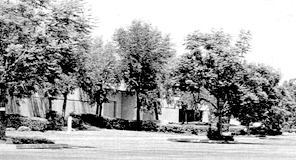 In 1978, George's son, Brian started
Jennings Firearms, manufacturing essentially the same gun as his
father. In 1985, he reorganized the company, as Bryco (named after
his son Bryan), due to legal
problems which may have prohibited him from engaging in firearms
production. He became the sole distributer, after "selling" the
company. Bryco was then owned by Janice Jennings. After losing a 50
million dollar lawsuit, Bryco was declared bankrupt, and put up for sale. On August 12, 2005, Bryco Arms’ plant manager Paul Jimenez offered the highest bid of
$510,000 for Bryco’s plant and equipment along with 75,000 guns.
This is about triple what the company is worth, and so there are
questions as to who the real owner might be. The company is now
called Jimenez Firearms, and appears to be the only Ring Of Fire
company still operating.
In 1978, George's son, Brian started
Jennings Firearms, manufacturing essentially the same gun as his
father. In 1985, he reorganized the company, as Bryco (named after
his son Bryan), due to legal
problems which may have prohibited him from engaging in firearms
production. He became the sole distributer, after "selling" the
company. Bryco was then owned by Janice Jennings. After losing a 50
million dollar lawsuit, Bryco was declared bankrupt, and put up for sale. On August 12, 2005, Bryco Arms’ plant manager Paul Jimenez offered the highest bid of
$510,000 for Bryco’s plant and equipment along with 75,000 guns.
This is about triple what the company is worth, and so there are
questions as to who the real owner might be. The company is now
called Jimenez Firearms, and appears to be the only Ring Of Fire
company still operating.Meanwhile, in 1991, a disastrous fire closed the Raven plant, and George Jennings had neither the time or
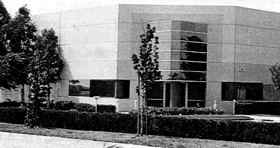 energy to start
over, so he retired and sold
Raven Arms designs to Phoenix Arms. Phoenix was owned in equal shares by his ex-wife,
children, four of his grandchildren, and by Raven's former general
manager. The company produced an essentially unchanged version of
the original Raven, as well as some newer models. Phoenix has also
been sued out of business, but has come back as Cobra - a different
company which is thus not liable for the liabilities of Phoenix.
energy to start
over, so he retired and sold
Raven Arms designs to Phoenix Arms. Phoenix was owned in equal shares by his ex-wife,
children, four of his grandchildren, and by Raven's former general
manager. The company produced an essentially unchanged version of
the original Raven, as well as some newer models. Phoenix has also
been sued out of business, but has come back as Cobra - a different
company which is thus not liable for the liabilities of Phoenix. 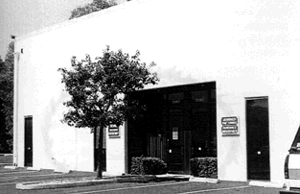 Sundance was started by
Steve Jennings in 1989, and went out of business in 1999. Though it
was a small company, having only two employees, and making few guns,
it supported other Ring of Fire companies, by producing parts, and
loaning money. Davis arms was started by Jim Davis, a former office
manger for Raven, and George Jennings' son in law. It produced
essentially the same designs as raven, Phoenix and the others.
Sundance was started by
Steve Jennings in 1989, and went out of business in 1999. Though it
was a small company, having only two employees, and making few guns,
it supported other Ring of Fire companies, by producing parts, and
loaning money. Davis arms was started by Jim Davis, a former office
manger for Raven, and George Jennings' son in law. It produced
essentially the same designs as raven, Phoenix and the others.
This was light industry, and the factories which manufactured these little guns were not much to look at. Most were low rise, modern style buildings, in modern industrial parks. In general, these companies are either sued, or regulated, out of business, by the anti gun factions, as soon as they can be identified. The
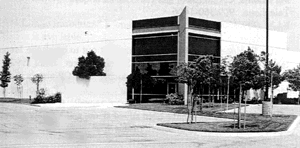 justification for this is that these guns are
used in an inordinate number of crimes. As an answer to this type of
logic, I present the example below:
justification for this is that these guns are
used in an inordinate number of crimes. As an answer to this type of
logic, I present the example below:Suppose that a study is done, showing that most muggers and rapists wear athletic shoes, while committing crimes. It is proposed that the wearing of such shoes permits these people to escape more quickly, and to be able to more easily climb fences, scale walls, and go through woods and parks. It is eventually determined, through police records, that over 70% of the perpetrators of these crimes wear athletic shoes during their commission. Now a reasonable person might decide that the one has nothing to do with the other, and that while it certainly makes sense to wear athletic shoes during the commission of these types of crimes, where a quick escape may be needed, the shoes have little to do with the means, or the motivation to commit such crimes. In addition, many people own and wear such shoes, and the vast majority commit no crimes at all. Finally, even were it impossible for such shoes to be obtained legally, it would make no difference. Criminals would either obtain them illegally, if they decided that they really needed them, or would simply commit their crimes wearing regular shoes. It is unlikely that the inability to acquire athletic shoes would prevent a criminal from committing a crime, even though the wearing of these shoes might be preferred to the wearing of regular shoes. A reasonable person would understand this - an ignorant, simplistic, self righteous type would not. This type of person might insist that such shoes should be banned, or at least greatly restricted. That only athletes involved in legitimate athletic events would have any need for such shoes. The claim would be made that since such shoes are worn during the commission of 70% of street crimes, this would reduce such crimes by 70% or perhaps more. It might also be suggested that a regular street cop, having to wear standard uniform dress shoes, would be at a huge disadvantage against criminals so shod. He would be, as it were out shoed.
Now the previous might sound pretty silly, and it is pretty silly, yet the same argument is taken very seriously when used by liberals attempting to ban all guns, or certain classes of guns. The truth is, violent crime was a pretty popular pastime for hoodlums, low lives, and other useless types, long before the invention of firearms, and will continue to be so, even should all firearms be banned. Because of this foolishness, the Raven has the distinction of spawning a number of pieces of firearms legislation, and of being a poster child for gun control. This is a distinction it shares with the Thompson, AK-47, AR-15, 50 BMG, 50 S&W, and a number of other famous guns. Though Ravens may not be great guns, they are at least in good company.